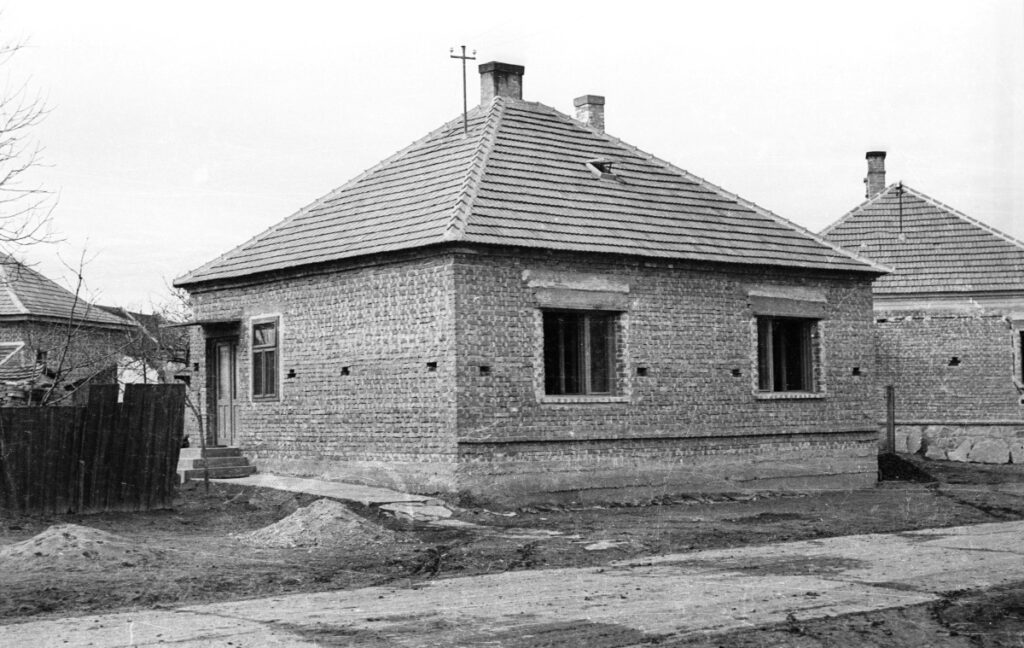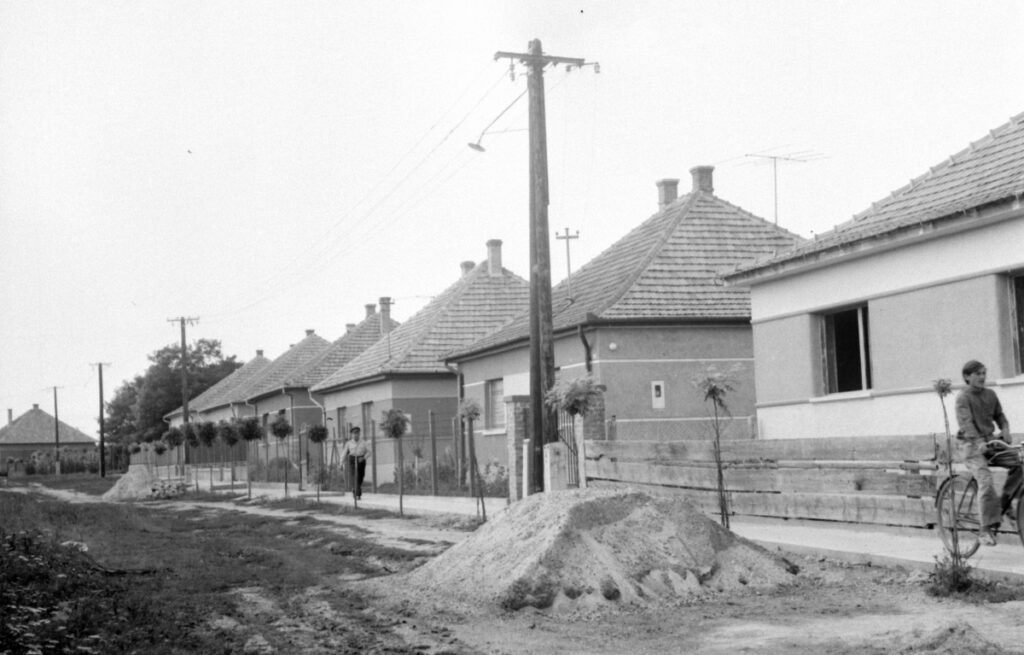The mass construction of prefabricated tower blocks in Hungary’s cities had its rough counterpart in the countryside with the building of a standard detached family house known as a Kádár-kocka or Kádár cube.
They take their name from János Kádár (1912-1989), the general secretary of the Hungarian Socialist Workers’ Party. He ruled the country from the aftermath of the 1956 Uprising until political rivals ousted him in 1988.
Any journey through provincial Hungary reveals seemingly endless rows of them by the road or railway line. There are also plenty in Budapest’s suburbs and on the fringes of other cities.

Around 800,000 were built in the 1970s and 1980s and more than 1 million Hungarians live in them today.
All mod cons
The single-storey houses have a floor area of just under 100 square metres – measuring 9.9 metres by 9.9 metres. They also have a distinctive ‘tent roof’, the simplest and cheapest solution for a square floorplan. Each house consisted of two rooms that were used as living rooms and bedrooms plus a kitchen, pantry and bathroom. For many people in the countryside this was a big step up in luxury.
Such was their uniformity that when you visited a friend who also lived in one you didn’t need to ask where the loo was.
Families built their own Kádár cube using the standard design. Loans from OTP, the only retail bank for almost all of the country’s communist history, financed them.

Non-communist origins of the Kádár cube
Despite its association with the communist period, the roots of the design go back to 1930 when the architect Máté Major designed a house for Pestszentlőrinc, part of Budapest’s District XVIII since 1950.
It didn’t catch on for a long time due to the succession of misfortunes that afflicted the country: the depression, the Second World War, the communist seizure of power, the Stalinist period when heavy industry sucked in all investment, and the 1956 Uprising and its aftermath.
The heyday of the Kádár cube lasted from the early 1960s to the late 1970s, when Hungary’s economy grew rapidly. Towards the end of the regime tastes changed, and two-storey Alpine-style family houses became the thing to have.
Nowadays, many of the Kádár cubes are not in great condition. That’s not surprising as their inhabitants are on the whole aging and have seen better days too. However, increasing numbers of younger people are buying them and, in many cases, giving them a more individual and modern look.


